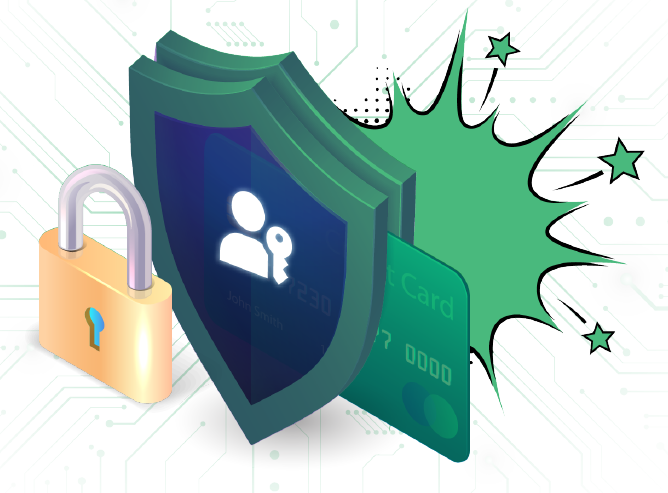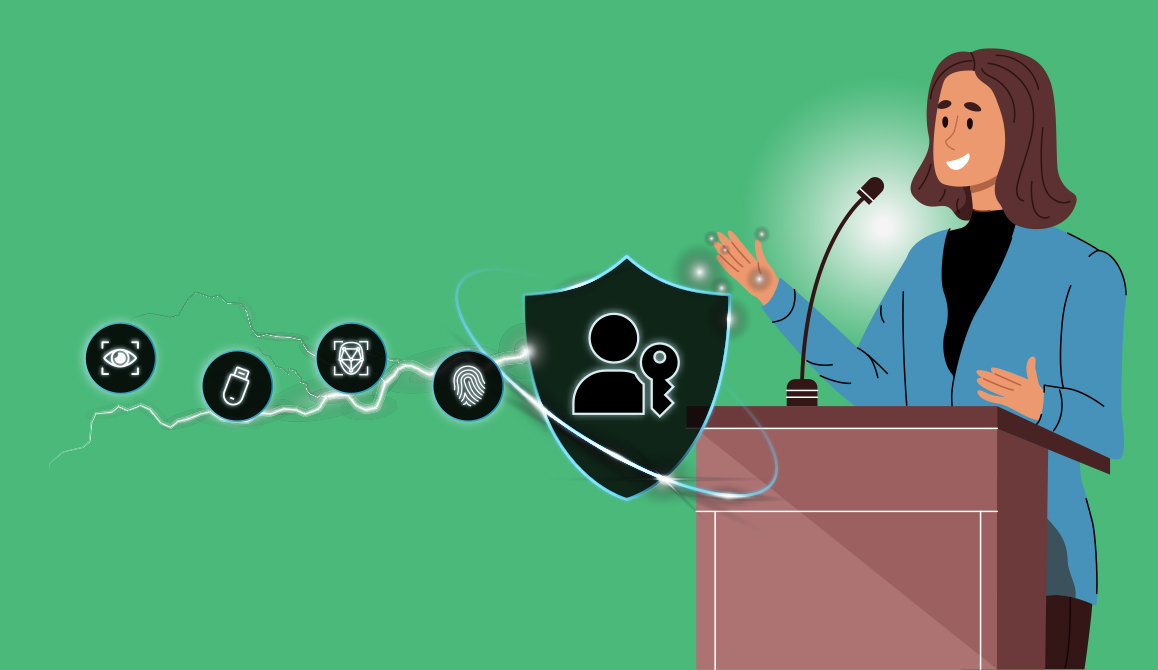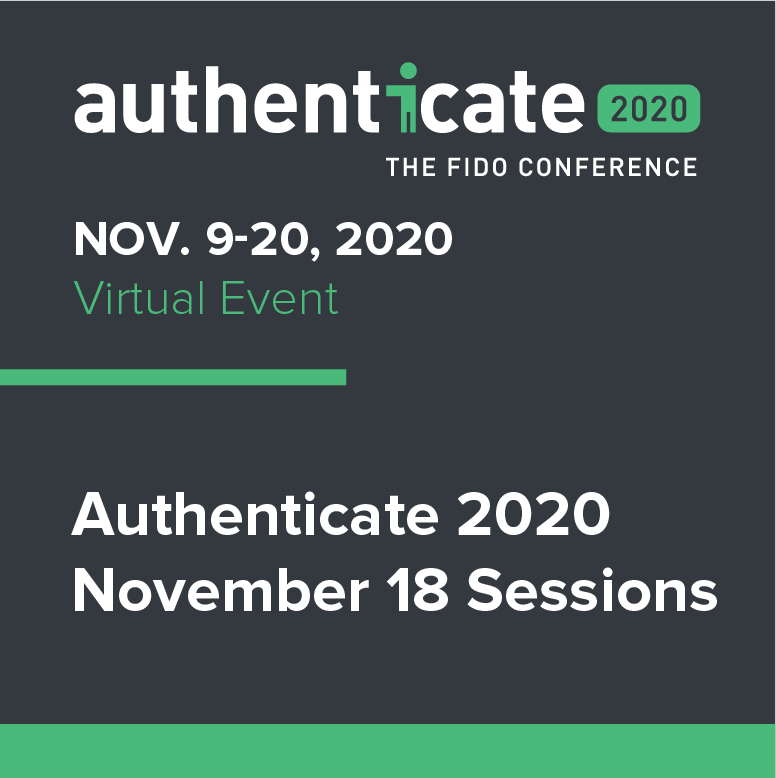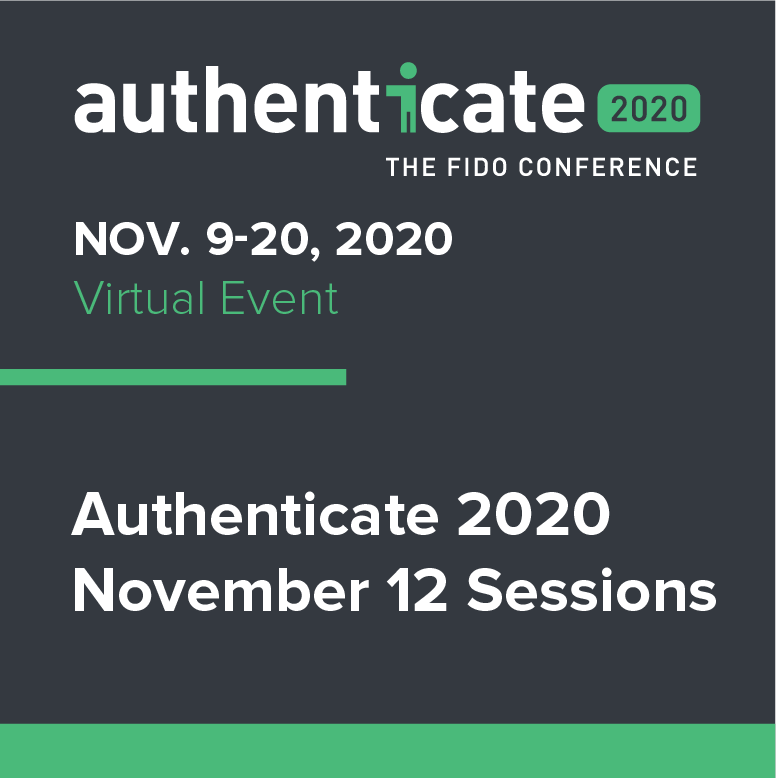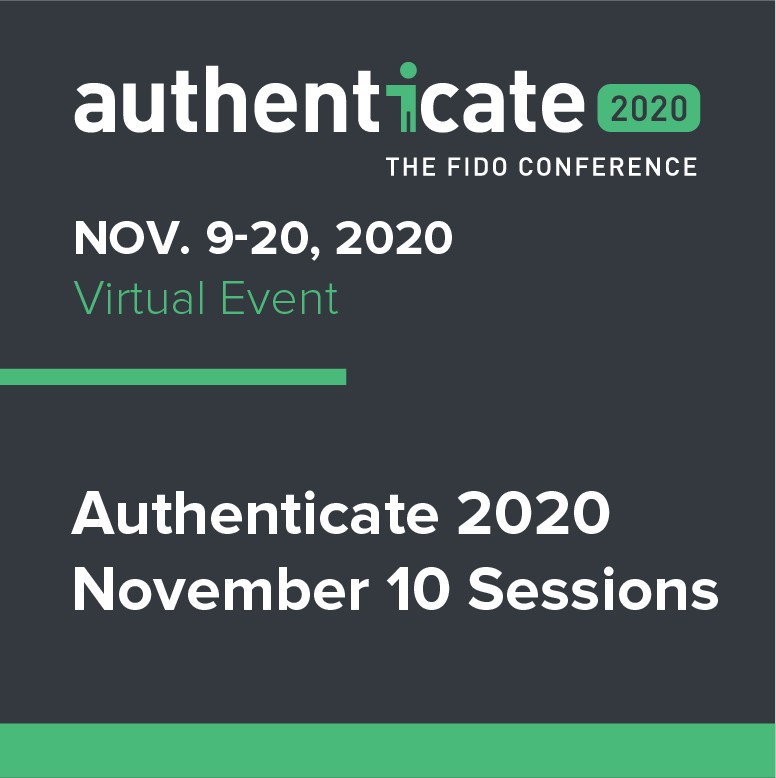FIDO Alliance Announces First 2021 Authenticate Virtual Summit, focusing on Modern Authentication for Financial Services

By: FIDO Alliance Staff
MOUNTAIN VIEW, CA, March 8, 2021 — Authenticate, the FIDO Alliance’s industry conference dedicated to the who, what, why and how of modern user authentication, announced today the speaker line up for it’s first 2021 Virtual Summit: “Modern Authentication for Financial Services”taking place March 25 from 9:00am – 12:00pm PDT.
Featured keynotes will be presented by Rachel Huber, Senior Analyst, Payments and John Buzzard, Lead Analyst, Fraud & Security, both of Javelin Research; David Henstock, Head of Identity & Authentication Products, Visa and Arshad Noor, CTO, StrongKey. The half day format includes sessions in which executives from eBay, Gemini, Google, Mastercard, JP Morgan Chase, Visa and Trusona will talk about the rapidly evolving security and usability measures being developed and deployed to safeguard financial service users by way of modern authentication.
Payments and financial services are amongst the leading industries for adoption of modern authentication systems – and digital transformation in general – with use cases ranging from simpler and stronger account sign-on to mobile banking to secure payments. COVID-19 has only accelerated the imperative to protect valuable resources while still providing secure access to online banking services.
Between current and emerging regulations, the ongoing battle against hackers and a fickle yet demanding consumer base, it is more critical than ever for leaders in this sector to find balance between compliance, security and user experience. This edition of the Authenticate Virtual Summit tackles these issues with an agenda that includes:
- Keynotes from FIDO Alliance, Visa, StrongKey and Javelin Strategy & Research
- Panel discussion on Payments & the Future of Authentication, featuring expert perspectives from eBay, Google and Mastercard
- Tips on how to secure users can their crypto from Gemini
- Details on how to leverage the FDX and FIDO protocols to enable secure access and data sharing
- Considerations and best practices for optimizing the strong authentication user experience
“Building off of the success of our Authenticate conference last year, we developed the Authenticate Virtual Summit Series to provide informative and interactive content on the role of modern authentication in organizations’ evolving digital transformation plans. Payments, financial services and cryptocurrency are natural focus areas for our first Summit, as these are amongst the leading industries for adoption of modern authentication systems – an imperative that has only accelerated during COVID-19,” said Andrew Shikiar, executive director and CMO of the FIDO Alliance. “We are proud to have such an esteemed roster of financial services industry thought leaders committed to imparting their collective insight, especially as the risks of security breaches remain high and consumers demand increasing convenience.”
To view the full agenda and register, visit www.authenticatecon.com
For more information about additional summits: https://authenticatecon.com/introducing-the-authenticate-virtual-summit-series/
About the FIDO Alliance
The FIDO (Fast IDentity Online) Alliance, www.fidoalliance.org, was formed in July 2012 to address the lack of interoperability among strong authentication technologies, and remedy the problems users face with creating and remembering multiple usernames and passwords. The FIDO Alliance is changing the nature of authentication with standards for simpler, stronger authentication that define an open, scalable, interoperable set of mechanisms that reduce reliance on passwords. FIDO Authentication is stronger, private, and easier to use when authenticating to online services.




